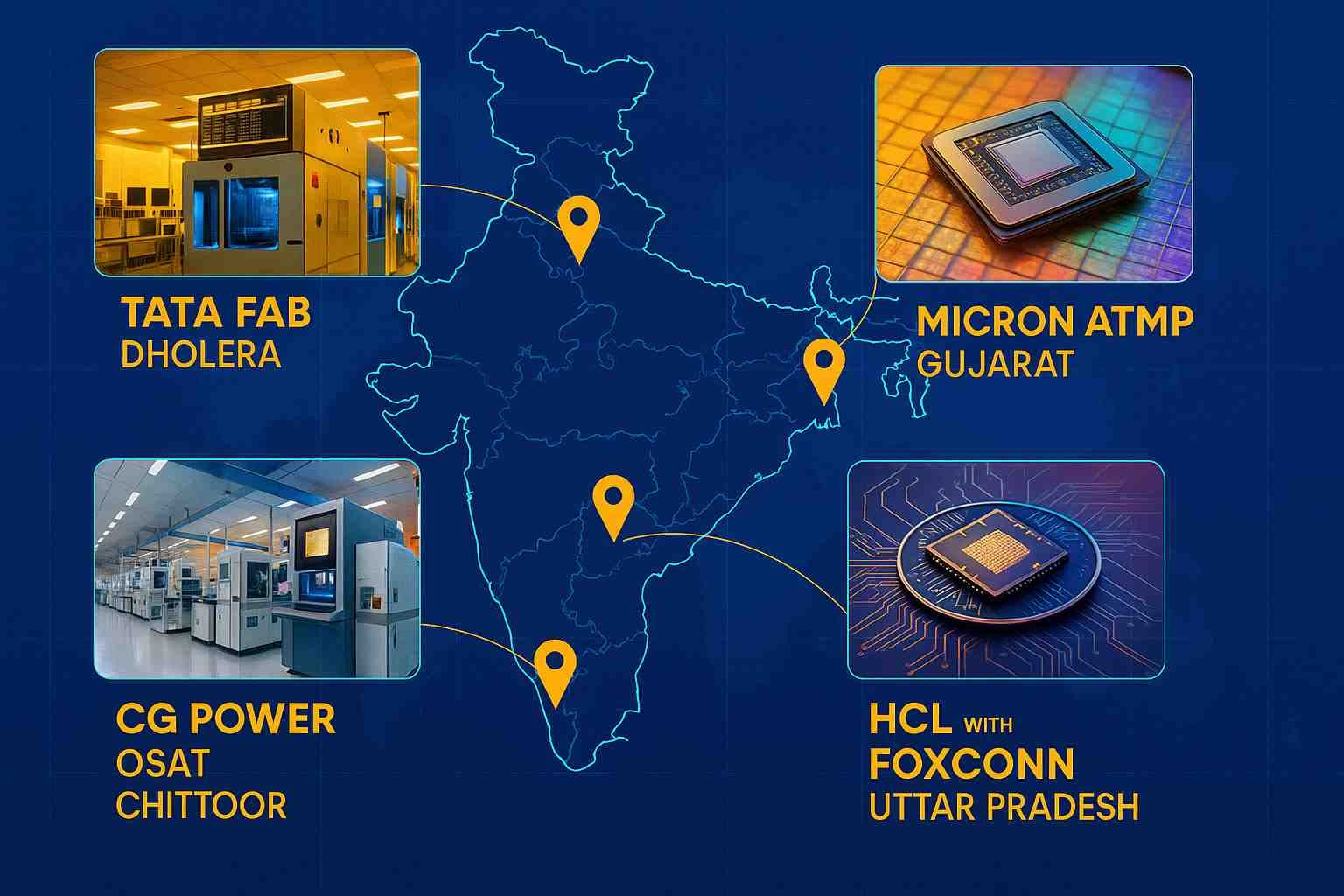The Developing Semiconductor Ecosystem in India

The Developing Semiconductor Ecosystem in India
The Importance of Semiconductors
Semiconductors are the backbone of modern technology, powering smartphones, computers, cars, medical devices, and emerging fields like AI, IoT, and quantum computing. The COVID-19 pandemic exposed vulnerabilities in global semiconductor supply chains, prompting India to prioritize a domestic ecosystem to enhance national security and foster technological innovation.
India’s Semiconductor Landscape
India has long been a hub for semiconductor design, hosting major design centers for companies like Intel, Qualcomm, and AMD. However, manufacturing has relied heavily on imports. The India Semiconductor Mission (ISM) and Semicon India program are transforming this by promoting domestic fabrication, assembly, testing, and packaging, positioning India as a global electronics leader.
Key Government Initiatives:
- India Semiconductor Mission (ISM): Develops a comprehensive ecosystem for design, fabrication, and packaging.
- Semicon India Program: Provides ₹76,000 crore (over $10 billion) in fiscal support for semiconductor and display manufacturing.
- Design Linked Incentive (DLI) Scheme: Supports chip design and product development costs.
- Production-Linked Incentive (PLI) Scheme: Attracts investments for manufacturing facilities.
- Workforce Development: Invests in training and specialized education for a skilled talent pool.
- Collaborations: Promotes partnerships between academia, research, and industry for innovation.
- Advanced Nodes: Focuses on legacy nodes while investing in advanced chipmaking technologies.
Major Semiconductor Projects
The Semicon India program has spurred significant projects to bolster India’s semiconductor industry:
- Tata Electronics’ Fab (Dholera, Gujarat): India’s first fab, in partnership with PSMC, producing 50,000 wafers monthly.
- Micron Technology’s ATMP Facility (Sanand, Gujarat): Specializes in assembly, testing, marking, and packaging of memory and storage products.
- CG Power & Industrial Solutions’ OSAT Plant (Sanand, Gujarat): Collaborates with Renesas Electronics and Stars Microelectronics.
- Kaynes Technologies and AOS: Establishing a semiconductor unit in Sanand, Gujarat.
- HCL Technologies – Foxconn JV: Setting up an OSAT unit in Jewar, Uttar Pradesh.

Market Growth and Workforce Needs
India’s semiconductor market, valued at $26.3 billion in 2022, is projected to reach $54 billion by 2025 and $271.9 billion by 2032, with a CAGR of 26.3%. To meet this demand, the industry will require 1.2 million skilled workers by 2032, spanning chip design, fabrication, and packaging. While India holds 20% of the global design workforce, gaps in fabrication and packaging talent are being addressed through skill development programs and industry-academia collaborations.
Looking Ahead
India’s semiconductor ecosystem is on a trajectory of rapid growth, driven by strategic government initiatives, global partnerships, and a focus on innovation. By reducing reliance on imports and building a skilled workforce, India is poised to become a global semiconductor leader, powering the next era of technological advancements.
Discover more about India’s semiconductor journey at SemiconIndia.org.



